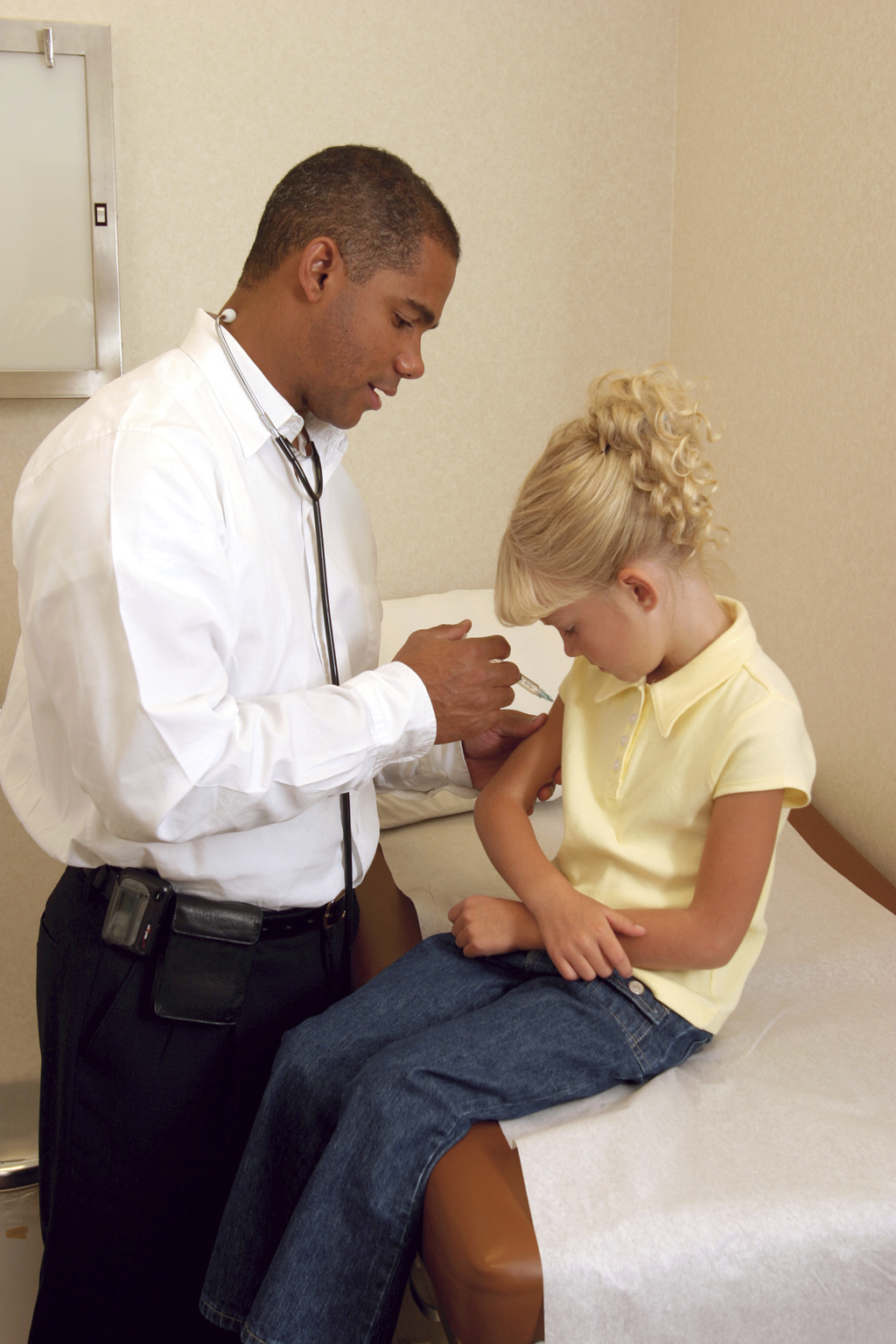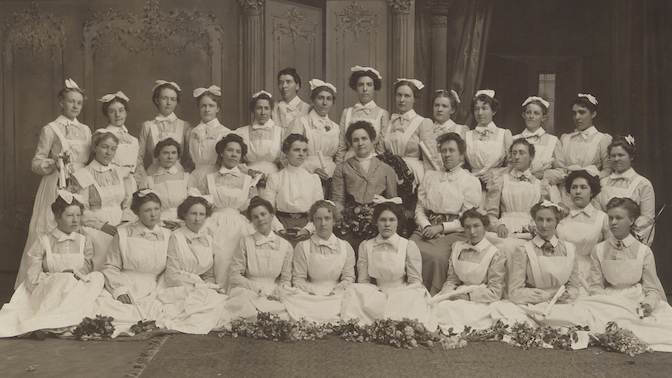Latter-day Saints and Medicine
The human family experiences varying levels of health with the physical bodies we obtain upon our individual births. Members of The Church of Jesus Christ of Latter-day Saints are taught to care for their bodies and to use wisdom in their choices for their well-being.
Despite eating healthy meals, exercising, abstaining from harmful substances, and getting adequate sleep, our bodies age and we frequently encounter injuries, illnesses, diseases, and conditions that require assistance for healing. The Church of Jesus Christ of Latter-day Saints has stated, “Seeking competent medical help, exercising faith, and receiving priesthood blessings work together for healing, according to the will of the Lord.”[1]
President Dallin H. Oaks has explained:
- Latter-day Saints believe in applying the best available scientific knowledge and techniques. We use nutrition, exercise, and other practices to preserve health, and we enlist the help of healing practitioners, such as physicians and surgeons, to restore health.
- The use of medical science is not at odds with our prayers of faith and our reliance on priesthood blessings.[2]
Contents
Early Church History of Obtaining Medical Training
“In the 1870s, after medical practice had advanced following the Civil War and after the railroad had more closely connected Utah with the rest of the country, Church leaders began to consider ways that Saints could receive professional education in the eastern United States.”[3]
Church president Brigham Young had developed greater confidence in scientific medicine and sought to integrate it with healing by faith.[4]
- In 1873 Eliza R. Snow told the sisters that Brigham Young had requested that women enter the field of medicine. She stated that President Young wanted women to get medical degrees, study nursing and midwifery, and share their knowledge with sisters in their wards and stakes. Eliza R. Snow told the women: “We have to get up these classes and attend to all these things. Don’t you see that our sphere is increasing? Our sphere of action will continually widen, and no woman in Zion need to mourn because her sphere is too narrow.”[5]
- In 1877 Romania Pratt became the first Latter-day Saint woman to graduate from medical school at a time when germ theory helped make medical practitioners more effective at preventing and fighting disease.[6] She returned to Utah and opened her practice in Salt Lake. She also taught midwifery classes to Relief Society sisters free of charge.
Ellen Brooke Ferguson, who also obtained her medical training in the east, was appointed as the first resident physician and surgeon for Deseret Hospital in 1882. Other women who studied in the eastern United States and returned to Utah with medical expertise include Ellis Reynolds Shipp, Martha Hughes Cannon, Margaret (Maggie) Curtis Shipp Roberts, and Elvira S. Barney.
Church Hospitals
Deseret Hospital
“A movement to establish a hospital in Salt Lake City operated by Latter-day Saints had begun by at least the early 1870s. In 1872 the Deseret News asked, ‘Shall we have an hospital?’ The newspaper noted that St. Mark’s Hospital, founded earlier that year by the Episcopal Church partly in response to the needs of the mining community, was an excellent facility, but ‘its capacity is altogether too limited for this large and growing city.’ Private hospitals also attempted to meet some of the need.[7]
Through the efforts of the Relief Society to gather funding, the Deseret Hospital was dedicated on July 17, 1882, and remained open for twelve years.
LDS Hospital
W. H. Groves, a Salt Lake City dentist, donated enough money to purchase the land that LDS Hospital was built on. Together with donations from the Church of Jesus Christ, the hospital was completed in 1905 and opened as the W. H. Groves LDS Hospital. It had a nursing school and was an important training ground for many physicians.
LDS Hospital continued to expand and from 1913 to 1922 had a children’s ward that eventually separated and became Primary Children’s Hospital. Fifteen branches of the LDS Hospital eventually grew from the original single hospital, all operated under the direction of the Presiding Bishopric until 1970, when the Health Services Corporation of the Church was organized and a commissioner of health was appointed to oversee the health needs of the Church and to coordinate the health care offered at the fifteen hospitals.
In 1974, the First Presidency announced that the fifteen hospitals would be donated to a nonprofit organization. In a news release, they said, in part, that the Church could now devote full effort of its Health Services to the needs of the worldwide Church. The nonprofit, Intermountain Health Care, began operation of the hospitals as of April 1, 1975.
Primary Children’s Hospital
May Anderson, first counselor in the Primary General Presidency, noticed a child laboring on crutches along a Salt Lake City street and recognized a need for a hospital specializing in the needs of children. Primary General President Louie B. Felt supported the cause and a children’s ward was established in the LDS Hospital in 1913. At the time, surgeries were performed at LDS Hospital and the children convalesced in the Primary facility. The facility, named Primary Children's Hospital in 1934, continued to grow and was relocated to a new building in 1952. Eventually, LDS Hospital closed its pediatric unit and the care for children was shifted to the Primary Children’s Hospital. A new facility was completed in 1990 in the University of Utah Medical Complex. It is now known as Intermountain Primary Children’s Hospital and encompasses more than one facility.
In 1922, Primary general board member Nelle Talmage suggested an annual “Penny Day” when members of the Church could contribute pennies equaling their age. Pennies by the Inch® is Primary Children’s Hospital’s oldest fundraising campaign—100 years of emphasizing children giving to children.
General Authorities Who Were Medical Professionals
- Russell M. Nelson, world-renowned heart surgeon
- Dale G. Renlund, cardiologist, Medical Director at the Utah Transplantations Affiliated Hospitals Cardiac Transplant Program
- Randall K. Bennett, dentistry and orthodontics
- Ted E. Brewerton, pharmacist
- Weatherford T. Clayton, obstetrician and gynecologist
- J. Devn Cornish, doctor specializing in newborn intensive care
- LeGrand R. Curtis Sr., orthodontist
- Timothy J. Dyches, otolaryngology-head & neck surgeon
- Daryl H. Garn, orthodontist
- Eduardo Gavarret, pharmaceuticals
- Taylor G. Godoy, dentist
- Harold G. Hillam, orthodontist
- William K. Jackson, physician
- Larry R. Lawrence, ophthalmologist
- Hugo E. Martinez, physician and medical consultant
- K. Brett Nattress, health care
- Merrill C. Oaks, ophthalmologist
- William W. Parmley, cardiologist
- John C. Pingree Jr., health care administration
- Kent F. Richards, surgeon
- Gregory A. Schwitzer, physician
- Cecil O. Samuelson, rheumatologist
- John Sonnenberg, dentist
- Robert R. Steuer, doctor, developer of medical electronic diagnostic devices
- John H. Taylor, dentist
- J. Ballard Washburn, physician
- Frederick G. Williams, physician
Other Notable Contributions in the Medical Field by Latter-day Saints
- James O. Mason, who served as a General Authority from April 2, 1994 to October 7, 2000, was the U.S. Director of the Centers for Disease Control and Prevention, the Acting Surgeon General of the United States, U.S. Assistant Secretary for Health, and the American delegate to the World Health Organization
- Charles R. Smart, surgeon, director of the American College of Surgeons cancer division, creator of the Utah Cancer Registry
- Homer R. Warner, cardiologist, pioneer in the field of informatics, and the founder of the Department of Biomedical Informatics at the University of Utah
- Roger R. Williams, professor of internal medicine, expert in cardiovascular research, and creator of databases for heart diseases
- Donald B. Doty, thoracic and cardiovascular surgeon, nine-year volunteer chairman of Health Services for the Missionary Department of The Church of Jesus Christ of Latter-day Saints.[8]
- Jon M. Huntsman, Sr., founder and principal benefactor of the Huntsman Cancer Institute
- John R. "Jack" Pfeifer, vascular surgeon
Volunteering Time and Medical Skills
In his October 2022 General Conference talk, President Dallin H. Oaks mentioned the global effort to help the poor and distressed. In part he noted:
- The provision of medical and dental care to those in need is another example. In Chicago, I met a Syrian-American critical care physician, Dr. Zaher Sahloul. He is one of the founders of MedGlobal, which organizes medical professionals to volunteer their time, skills, knowledge, and leadership to help others in crises, such as in the Syrian war, where Dr. Sahloul risked his life in giving medical care to civilians. MedGlobal and similar organizations (including many Latter-day Saint professionals) demonstrate that God is moving professionals of faith to bring the poor needed relief worldwide.[9]
Latter-day Saint medical professionals, both those working full time and those who are retired, find opportunities to volunteer their time and skills.
Blood Donations
The Church of Jesus Christ of Latter-day Saints supports blood donations to such humanitarian organizations as the American Red Cross. Blood drives are often organized by stakes. Church employees donate at blood drives at the Church Office Building located in Salt Lake City and college students donate on Church-owned campuses.[10]
In March 2022, the Church of Jesus Christ gave the American Red Cross US$5.1 million to help it meet blood and convalescent plasma needs for hospital patients.[11] “We’re pleased to contribute over $5 million this year, but our most important contribution comes from our Church members — thousands of them — who have literally rolled up their sleeves to give blood and donate so much of their time,” said Gérald Caussé, Presiding Bishop of The Church of Jesus Christ of Latter-day Saints.
In 2023, the Church announced a donation of US$8.7 million to the American Red Cross to assist with the purchase of biomedical equipment, mobile blood donation centers and programs to assist those with cancer or sickle cell disease.
In 2024, the Church announced a US$7.35 million donation. The funds will help purchase blood equipment and biomedical emergency vehicles and will assist with blood donor engagement initiatives and support for patients with sickle cell disease.
The American Red Cross and The Church of Jesus Christ of Latter-day Saints also signed a new memorandum of understanding. This memorandum — the fifth since their initial agreement in 2005 — streamlines disaster response efforts by reducing service redundancies, designates Church buildings as potential shelters, and enhances coordinated disaster planning through joint training and drills.[12]
The Church of Jesus Christ and the American Red Cross have a longstanding association that dates to the late 19th century.[13]
Members also donate blood and plasma to other organizations and hospitals.

